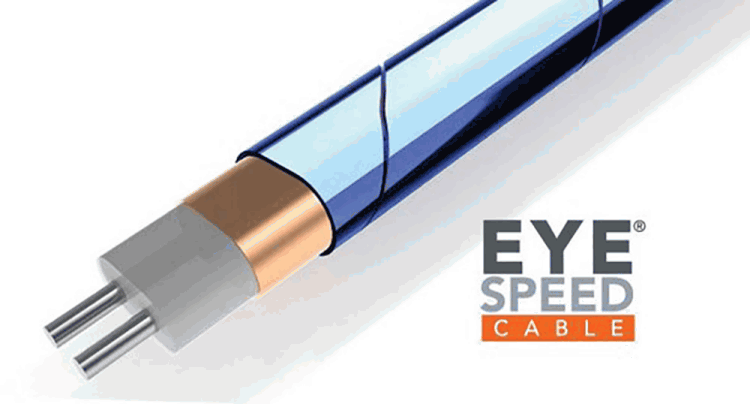

[Sponsored] In the relentless pursuit of faster, smaller, and more efficient systems, the challenges faced by electronic engineers have evolved dramatically. Today’s designs are measured not only by clock speeds and bandwidths, but by the precision with which every signal is transmitted. As data rates move well into the hundreds of gigabits per second, success increasingly depends on an invisible but critical factor: impedance.

Impedance defines how signals behave as they travel through cables and connectors. It dictates whether a design performs as intended or falls victim to distortion, reflection, or loss. Yet, while signal integrity often dominates design discussions, the control of impedance, and the precision required to achieve it, have become one of the defining capabilities of modern interconnect manufacturers.
Understanding what engineers are really controlling
Impedance is the relationship between voltage and current in an alternating current (AC) system. For designers working with high-speed digital signals, it represents much more. Impedance describes how a signal ‘sees’ the path it travels, shaped by conductor geometry, spacing, and the dielectric materials surrounding it.
When impedance is consistent throughout a signal path, data moves cleanly and predictably. When it is not, mismatches appear that cause reflections, the electrical equivalent of an echo. Each discontinuity adds a small amount of noise or distortion, and in multi-gigabit systems, those imperfections can quickly accumulate, leading to eye-diagram collapse or increased bit-error rates.
Modern interconnects are, in essence, precision transmission lines. The challenge lies in achieving controlled impedance across multiple materials, interfaces, and manufacturing processes, from the silicon package to the connector contact, through the cable and back again to the PCB.
The manufacturing precision behind reliable impedance
In high-speed systems, tolerances are now measured in microns. The consistency of a dielectric, the plating thickness on a contact, or the alignment of a twinax pair all influence impedance.
Controlling those parameters during the manufacturing process demands more than a simulation. Instead, it requires discipline and a deep understanding of how every step of the process affects the electrical performance.
For connector and cable specialists like Samtec, that means integrating electrical modelling directly into mechanical design, validating prototypes with time-domain reflectometry (TDR), and enforcing strict process control throughout production.
Every conductor diameter, dielectric constant, and spacing dimension is scrutinised to ensure the target impedance – whether 85, 90, or 100 Ω – remains consistent across the whole signal chain.
The goal is not simply to hit a nominal impedance, but to minimise the variation that leads to reflections and mode conversion. That level of repeatability separates ordinary interconnects from those designed for advanced computing, networking, and test applications.
One impedance does not fit all
Historically, engineers chose between a few well-established impedance standards: 50 Ω is used for single-ended RF systems, while Ethernet and other data links often use 100 Ω. As signalling technologies such as PAM4 and NRZ evolve, and as lane speeds approach 224 Gbps, these traditional values are no longer universal.
Different chipsets and channel architectures exhibit different insertion- and return-loss profiles. In many cases, a slightly higher differential impedance around 92 Ω provides a better overall match, reducing reflections and improving eye-height margins.
Choosing an appropriate impedance is therefore not just a matter of compliance; it is a system-level optimisation that can determine the success or failure of next-generation designs. It is here that manufacturers capable of fine-tuning impedance offer a real advantage to design engineers under mounting signal-integrity pressure.
From concept to cable: The Eye Speed 92 Ω solution
Recognising this emerging need, Samtec’s engineering team developed the Eye Speed 92 Ω high-performance cable, a next-generation interconnect platform designed to support higher data rates while minimising skew and attenuation.
Eye Speed leverages Samtec’s proprietary low-loss twinax construction and precision manufacturing expertise to deliver tight impedance control and minimal crosstalk, even at extreme data rates. Each cable is built to maintain differential impedance within a narrow tolerance window, ensuring predictable performance across the entire signal chain.
Beyond electrical performance, the cable’s mechanical flexibility and light weight make it suitable for both internal system links and external high-density interconnects. Applications include AI and machine-learning servers, high-speed data-centre systems, advanced instrumentation, and other environments where signal integrity and repeatability cannot be compromised.
The choice of 92 Ω characteristic impedance is far from arbitrary. It is the result of extensive modelling and customer collaboration, targeting an optimal value for many of today’s ultra-high-speed channels. By optimising for this impedance, engineers can achieve superior insertion-loss profiles and reduced return-loss sensitivity across the signal chain.
Precision as a competitive advantage
As digital systems continue their exponential growth in bandwidth, the margins for error shrink proportionally. Designers can no longer rely on component datasheets alone, as every transition, via, and connector now matters.
That shift has transformed impedance control from a design consideration into a manufacturing philosophy. The companies that succeed will be those that understand both the theoretical and practical aspects of impedance, and translate them into repeatable, real-world performance.
Samtec’s decades of experience in high-speed interconnects, coupled with vertically integrated design and manufacturing capabilities, enable it to deliver solutions that meet these tighter demands. From advanced connector systems to custom cable assemblies like Eye Speed, Samtec’s approach unites material science, process control, and test methodology, to guarantee performance that aligns precisely with engineers’ expectations.

Conclusion
Impedance may be invisible, but its influence touches every bit of data that moves through a system. The ability to shape, refine, and maintain it through the most demanding environments is what separates exceptional interconnect performance from the ordinary.
For engineers designing the systems that power tomorrow’s networks, instruments, and compute platforms, precision starts with the interconnect, and with partners who understand that every connection truly counts.
Supported by a global engineering team and local expertise through Spectrum Concepts in South Africa, Samtec offers end-to-end interconnect solutions, combining local support with world-class engineering.
Learn more about Samtec Eye Speed solutions at samtec.com/solutions/eyespeed
| Tel: | +27 11 425 1400 |
| Email: | [email protected] |
| www: | www.spectrumconcepts.co.za |
| Articles: | More information and articles about Spectrum Concepts |

© Technews Publishing (Pty) Ltd | All Rights Reserved